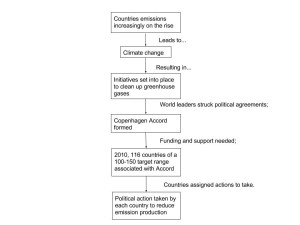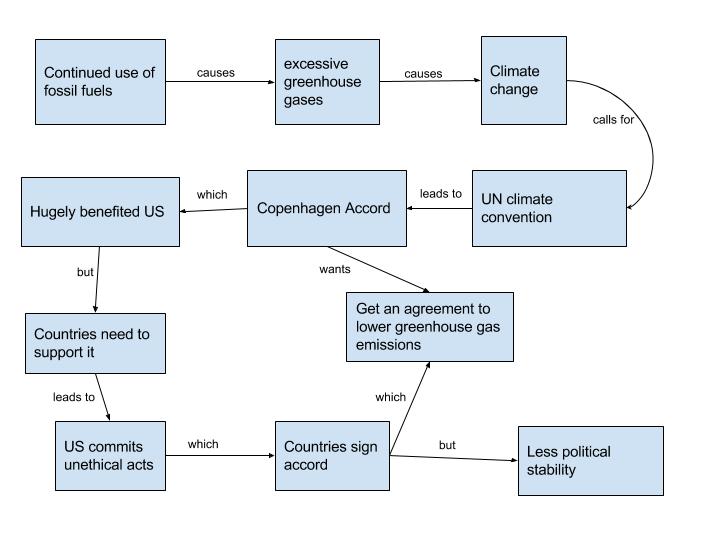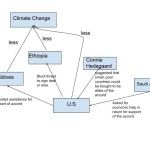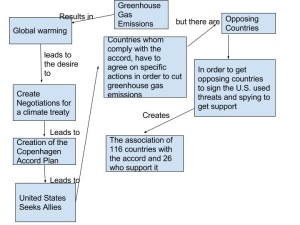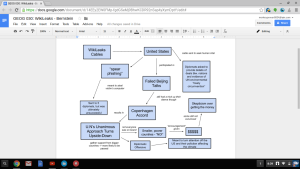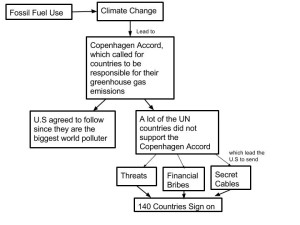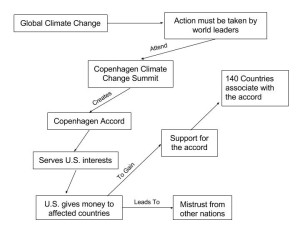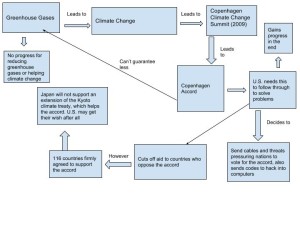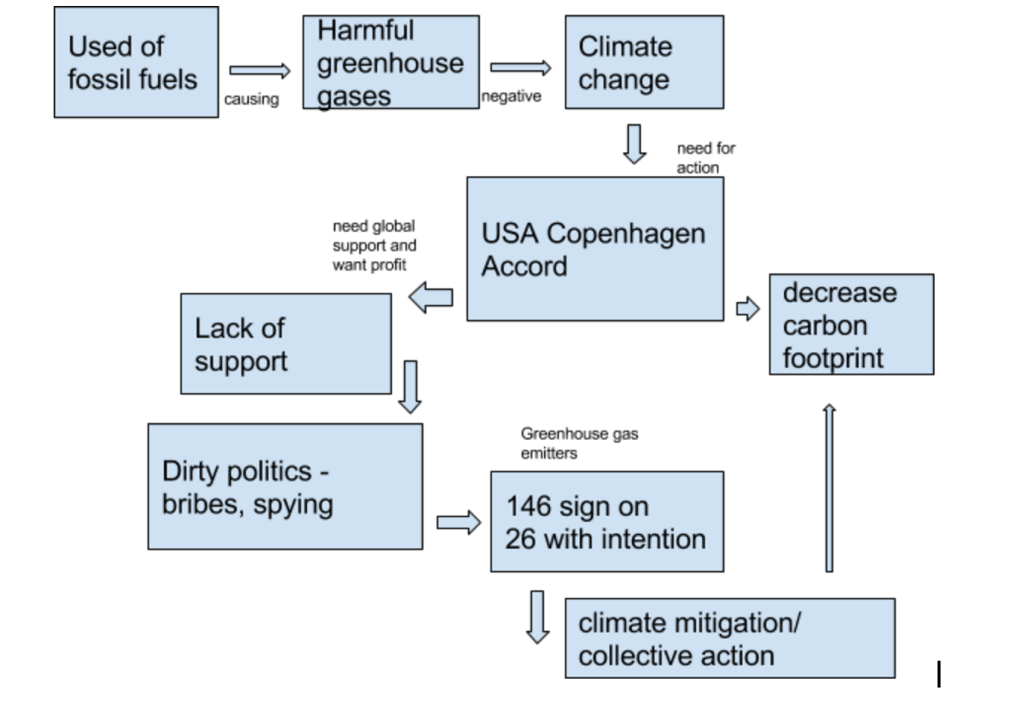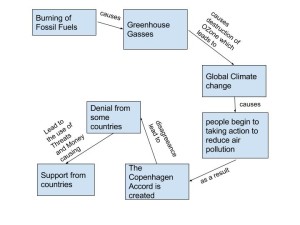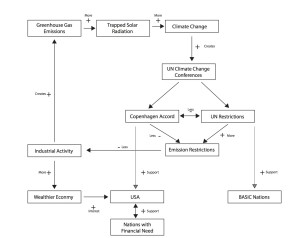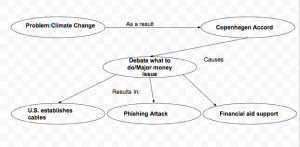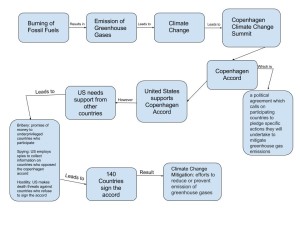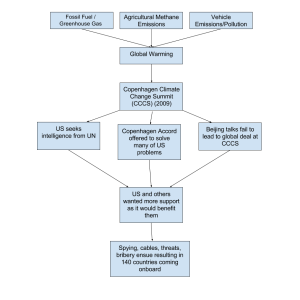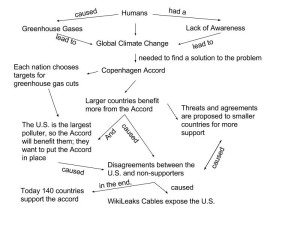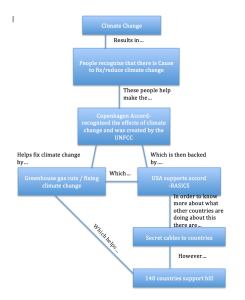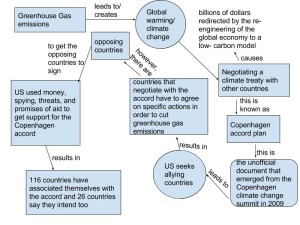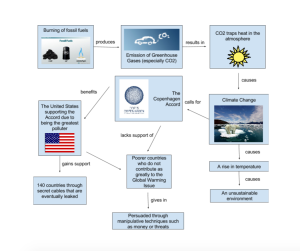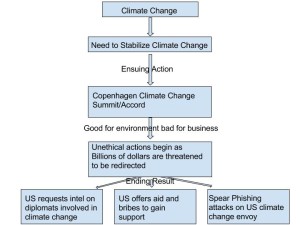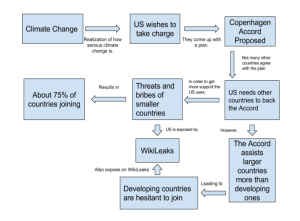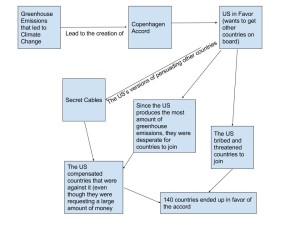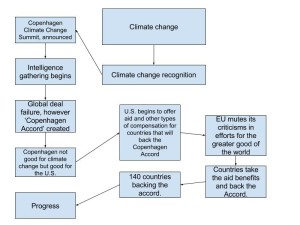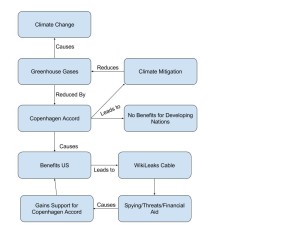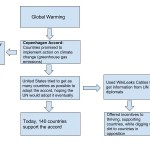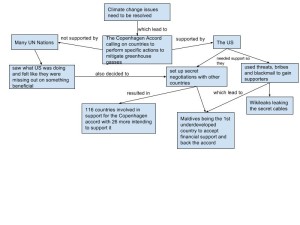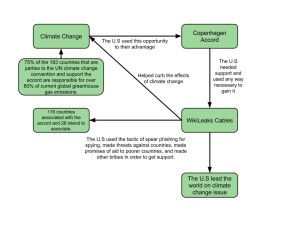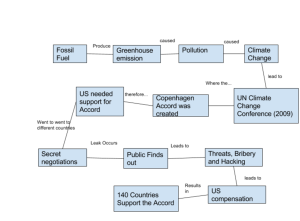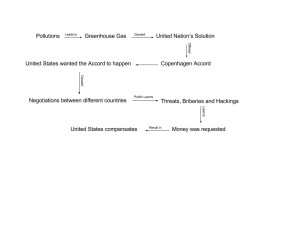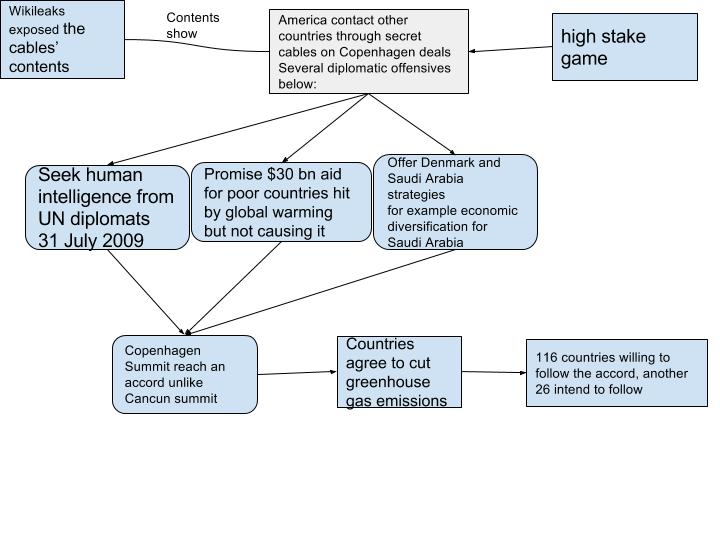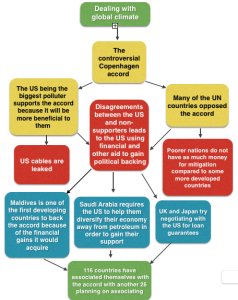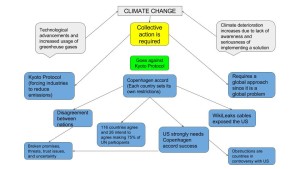Although the Wikileaks article is slightly outdated being published in 2010, the issue is still at hand. Many countries are in collaboration to come up with solutions for greenhouse gases caused by man-made Co2 emissions. Nearly every single country produces greenhouse gases and many at dangerous levels for example, US and China being the biggest. Organizations such as the Copenhagen Accord work together with multiple countries to create agreeable plans that each country is then to carry out in order to combat climate change by reducing emissions. Referring to my diagram, I listed the sequence of events leading up to countries taking action to correct global climate change. Political figures have been aware of the concept of climate change for many years but have not taken action until recently when the effects are actually showing. Populations are steadily increasing in the world which require more resources to facilitate which generally leads to more pollution due to the manufacturing of goods. Countries such as China have so much packed into a limited amount of space which has lead to the state they are in today with air quality at an all time low. It is important that countries take responsibility for their contribution to the global issue. Support from certain countries still do not comply to reducing emissions. As for other countries, some do not have the financial standing to sufficiently support the cause. In cases such as that it is up to the coalition of other richer countries to take care of the global environment.
I do believe that the State Department cable should have been made public. We all live on this planet and we all have the right to know what steps are being taken to protect it. The United States should definitely work in conjunction with other countries regarding Climate Change to help financially support third world countries who are being affected but cannot financially help towards the cause. This is a world wide issue and should be a world wide topic to work on resolving together regardless of finances; this effects everyone. Many people disregard global warming but scientist have proven many times that our climate is changing. You can tell by the past few years, mild winters in the north while the south gets slammed with snow?; Climate Change. This is something that should not be taken lightly and is a topic that can no longer be avoided. We need to act now and fast before it is to late. The government should be involved but with the knowledge of scientist leading their decisions. Stricter laws should be set forth for factories that produce a large amount of pollution, oil spills should be nonexistent and if an oil spill does occur there should be stricter repercussions for the perpetrators. Climate change is something we need to stop running from and start getting ahead of.

